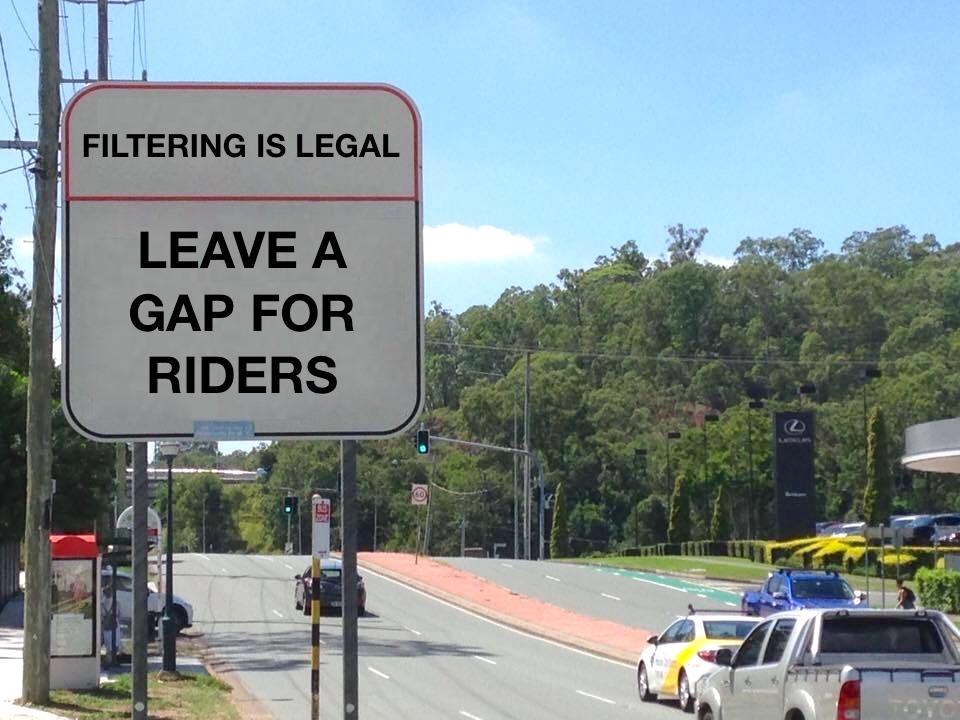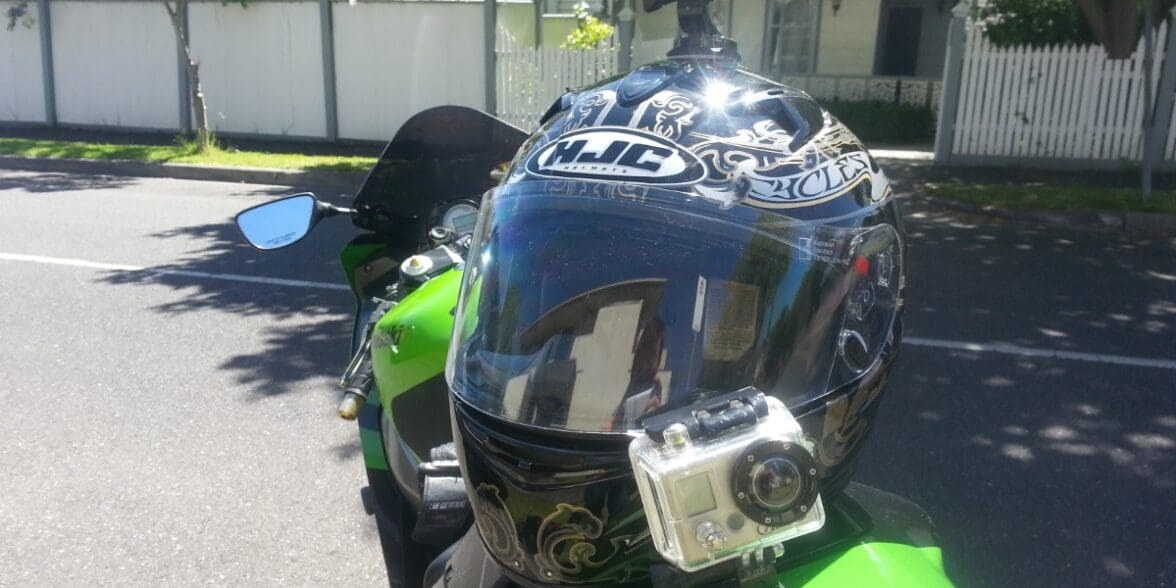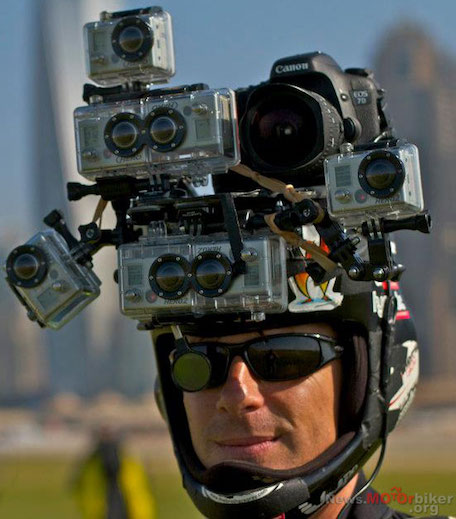Riders are confused about the legality of helmets with Bluetooth and camera attachments because the rules are not freely available and too technical.
In its submission to the National Transport Commission (NTC) on uniform national road rules, motorcycle specialist legal firm Maurice Blackburn Lawyers argues that riders cannot hope to know the rules because they are difficult and expensive to access.
“In our submission it is fundamentally important that where legislative regulation requires road users to comply with extrinsic material, the material must be publicly available, without the payment of a fee,” the Maurice Blackburn submission says.
“This principle is even more important for regulations which have penalties attached, such as Rule 270 (regarding helmet compliance).
“However, it appears that in Australia the only jurisdiction to have legislation to enshrine this principle is Victoria.”
In 2016, the law firm successfully defended rider Max Lichtenbaum, who was fined $289 and lost three demerit points, after being pulled over by police in Frankston in March 2014 for having a GoPro camera stuck to his helmet.

They won on the grounds that the relevant Australian Standard was not freely available for inspection at VicRoads.
“VicRoads has presumably now made the standard available at head office in suburban Melbourne,” the Maurice Blackburn submission says.
Are they really freely available?
But they believe it is not good enough for the standard to be freely availability in one location, saying it falls short of what would be “reasonably expected by the public in an era where legislative material is primarily accessed online”.
Maurice Blackburn principal Malcolm Cumming says the submission was put together by the firm’s Stop SMIDSY team. The submission deadline is today at 5pm.

Malcolm told us the NTC draft rule about helmets says compliance should allow for some “wear and tear and modification as long as the helmet inherently complies with the relevant helmet standard”.
Their submission says the standard should only apply up to the point of sale.
Too technical
He says it is almost impossible for people to know whether their helmet is compliant because, not only is the relevant standard not readily available or free to the public, it also too technical.
“The relevant standards are not designed to be easily and readily understood by road users which reflects their narrow technical purpose,” their submission says.
“These standards are designed for people with specialist training and equipment to interpret and apply.”
Malcolm says the proposed new rule is confusing and riders run the risk of copping a fine for wearing a helmet camera or Bluetooth device.
For those interested, the full text of their submission is available at the end of this article.
Uniform lane filtering rules
The NTC will also look at lane filtering “to harmonise the road rules across the states and territories to improve road user safety”.
Western Australia and Tasmania are about to join all other states and territories, except the NT, with lane filtering laws. However, they are not uniform across all states.
For example, Queensland allows riders to filter in emergency lanes and on highway edges, and some states allow filtering past trucks, buses and parked vehicles when there is a safe gap while others ban the practice.
The NTC proposal does not address these differences.
Instead, it addresses the anomaly that legally lane-filtering riders are not compliant with other road rules. They include passing on the left, staying within a lane, crossing solid lane lines and indicating a change of direction.

Uniform control rules
The NTC draft proposal also attempts to make uniform rules on motorcycle controls.
Over the past couple of years several states have passed more realistic rules on motorcycle control, including allowing riders to push a bike without having to wear a helmet, stand up on the footpegs and remove a foot from the pegs to stretch their leg.
Maurice Blackburn submission
Scope of Response
Maurice Blackburn has confined its response to proposed amendment 26, relating to Road Rule 270(3) of the Australian Road Rules and detailed in section 2.1.10 of the consultation draft on the subject of the requirement for motorcyclists to wear an approved motorcycle helmet.
Overview of Response
National consistency of Road Rule 270 is important – riders ride across borders.
A new Rule will allow for appropriate post sale (’in-service’) regulation of helmet fitness for use which is currently entirely absent in most jurisdictions.
The current proposed in-service regulation set out in proposed Rule 270(3)(d) is in our view not appropriate for the related following reasons :
The proposed rule would require ongoing compliance with Australian Standards which are not available to the public without payment of a substantial fee to the publishing entity.
Even if free access to the Standards was available it would be impossible for riders or law enforcement officers to ascertain whether a helmet ‘complied with’ the Standard.
The proposed rule does not clarify that proper use of attachments such as Bluetooth type communication devices and cameras is legal.
We support the adoption of alternative in-service regulation, as proposed by the Australian Motorcycle Council.
Detail of Response
Maurice Blackburn supports the NTC’s proposal to include the definition of ‘approved motor bike helmet’ within the Australian Road Rules. We believe that depending on the definition adopted, this has the potential to provide better outcomes for motorcyclists by providing readily understandable, safety based motorcycle helmet regulation consistently throughout Australia.
We note that currently although most jurisdictions have adopted Rule 270, or a substantively similar regulation, the definition of ‘approved motor bike helmet’ varies between jurisdictions, with many of these definitions being difficult to locate being contained in gazetted notices or disallowance instruments. Further the current definition in most jurisdictions has proved to be difficult to interpret by road users, enforcement agencies and Courts alike.
This has resulted in uncertainty as to whether there is any in-service regulation in most jurisdictions and the nature and extent of any such regulation. In turn this has resulted in inconsistent enforcement of motor bike helmet use within and between jurisdictions and poor outcomes for motorcycle riders. For example, there has been considerable uncertainty in relation to whether use of aftermarket attachments such as helmet cameras and Bluetooth type communication devices is legal.
Support for intention to mitigate unfair enforcement outcomes
We support the NTC’s intention to ‘mitigate the risk of unfair enforcement ’of Rule 270 for motorcycle riders, as well as the intention to allow ‘some wear and tear and modification’ of motor bike helmets.
However, Maurice Blackburn does not believe the current drafting of proposed Rule 270(3)(d) achieves this aim.
Support for compliance required with relevant standard at time of manufacture – Rule 270(3)(a)
We support the requirement for ‘approved motor bike helmets’ to be made in compliance with the relevant Australian or European standards as per the proposed Rule 270(3)(a).
However, we do not believe the requirement to comply with relevant standard should extend beyond the point of manufacture or sale.
Maurice Blackburn does acknowledge the need for motor bike helmets to be in a serviceable condition while in use as detailed later in our submission.
Use of standards to define ongoing compliance requirements – Rule 270(3)(d)
The proposed Rule 270(3)(d) requires an ‘approved motor bike helmet’ to not be damaged or modified in such a way that it ‘cannot comply’ with one of the relevant standards.
Maurice Blackburn does not support this requirement for ongoing regulation by reference to a manufacturing standard.
These standards are prepared and published for helmet manufacturers and designers and were never intended to be used to assess ongoing compliance beyond point of sale. They are not fit for that function. They primarily deal with design and packaging requirements as well as providing sample based testing procedures which are used to certify a given design and manufacturing process.
In our submission the use of these standards for ongoing compliance will lead to a number of unintended consequences and poor outcomes for motorcycle riders as well as enforcement agencies.
Access to the standards
The Australian Standards referenced in the proposed Rule 270, AS 1698 and AS/NZS 1698, are not freely available to the public and require the payment of substantial licence fees in order to be accessed.
In our submission it is fundamentally important that where legislative regulation requires road users to comply with extrinsic material, the material must be publicly available, without the payment of a fee.
This principle is even more important for regulations which have penalties attached, such as Rule 270.
However, it appears that in Australia the only jurisdiction to have legislation to enshrine this principle is Victoria.
Section 32(3)(b)(ii) of the Interpretation of Legislation Act (1984) (Vic) requires that a copy of incorporated material, such as Australian Standards, ‘must be kept available for inspection during normal office hours by members of the public without charge’ at the relevant body’s principal office.
In 2016 Maurice Blackburn successfully appealed an infringement notice issued to a rider for an alleged breach of Rule 270 of the Road Safety Rules 2009 (Vic) for having a camera attached to his motorcycle helmet. The appeal succeeded on the basis the relevant Australian Standard was not available for inspection at VicRoads.
The appeal was heard in the County Court of Victoria following the infringement being upheld in the Magistrates Court.
VicRoads has presumably now made the standard available at head office in suburban Melbourne. In our submission free availability in one location falls short of what would be reasonably expected by the public in an era where legislative material is primarily accessed online, and as noted Victoria is the high water mark in Australia in terms of providing free access to standards.
In June 2016 the Joint Standing Committee on Delegated Legislation (‘the WA Committee’) in Western Australia released its report into Access to Australian Standards adopted in Delegated Legislation.
This report (which referenced the Maurice Blackburn County Court Appeal decision referred to above) emphasised that ‘[f]ree access to the law is, and should be in the Committee’s view, a right and necessity’.
The WA Committee highlighted the inherent unfairness in expecting members of the public to comply with laws they cannot freely access, especially those which attach penalties, and recommended that all Western Australian department and agencies upon request provide a copy of a relevant standard or part thereof free of charge.
The WA Committee also noted that departments and agencies should bear the cost of providing the relevant standard.
Interpretation and application of standards
The relevant standards are not designed to be easily and readily understood by road users which reflects their narrow technical purpose.
These standards are designed for people with specialist training and equipment to interpret and apply.
For example the European Standard specifies:
[t]he helmet, after undergoing ambient-temperature and hygrometry conditioning, shall be placed between two parallel plates by means of which a known load can be applied along the longitudinal axis 6/ (line LL in the figure) or the transverse axis (line TT in the figure). The surface of the plates shall be large enough to contain a circle of at least 65 mm in diameter. An initial load of 30 N shall be applied, at a minimum plates speed of 20 mm/min, and after two minutes the distance between the two plates shall be measured. The load shall then be increased by 100 N, at a minimum plates speed of 20 mm/min, and then wait for two minutes. This procedure shall be repeated until the application of a load of 630 N.
In the test along each axis, the deformation measured under the 630 N load shall not exceed that measured under the initial 30 N load by more than 40 mm.
Clearly, a motorcyclist is not able to practically inspect their helmet and determine whether the helmet is worn, damaged or modified to the extent that it is not currently able to resist being deformed as described.
In short, in our submission it is not possible to determine compliance with, and therefore impossible to enforce, the proposed in-service regulation.
Specific application of standards
The problem is compounded by the fact the standards are not designed to test the compliance of any one given helmet. Instead these standards are designed to test and certify a given design and production of helmets.
For example AS/NZS 1698 requires in order to certify a given helmet design that six identical test helmets to be tested.
Five helmets are then pre-treated in different conditions, one in high temperature, one in ambient temperature, one low temperature, one in emersion in water and one in solvent. These five helmets are then subjected to three different tests. A sixth helmet is also subjected to an additional test.
These are destructive tests, meaning the helmet is damaged during the testing, and it is in fact not possible to test a single helmet for compliance with the relevant standards.
This means we would be left with the absurd result where if a motorcyclist or enforcement agency wanted to test the current compliance motor bike helmet under AS/NZS 1698 they would require:
1. A copy of expensive standards;
2. Specialist training to understand the standard;
3. Specialist equipment to test the helmet;
4. Six identical helmets, which all would have had to have undergone the same use, wear and modification.
Even then if the helmets were tested and determined to be up to standard the helmets would no longer be suitable for use because of the destructive testing process.
Additional unintended consequences of using a manufacturing standard
There are a number of additional unintended consequences of using a manufacturing standard as the standard for ongoing compliance.
For example if ongoing compliance with AS/NZS 1698 is required a motorcyclist would have to carry around the information pamphlet required under AS/NZS 1698. Does removal of labels constitute a relevant modification?
This has been specifically acknowledged in the ACT where the relevant Disallowance Instrument specifies ‘[t]hose requirements of the above Standard requiring to be accompanied by a brochure or label detailing use and care’ are ‘disapplied’
and highlights in another way the problematic nature of in service regulation by reference to manufacturing standards.
Preferred outcome
Our preferred outcome for Rule 270(3) is that compliance with the relevant standard is only required at the time of manufacture as per the proposed Rule 270(3)(a).
Any regulation beyond this point should not be by reference to standards, given the availability and interpretation/testing issues outlined above.
We are of the view that Rule 270 should include some form of ‘in-service’ regulatory requirement for motor bike helmets, to mitigate against unsafe helmets being worn by motorcyclists, but this requirement should not be by reference to the relevant standards.
This ‘in-service’ requirement should be drafted in a clear and concise manner without reference to extrinsic materials.
In this regard Maurice Blackburn endorses the submission made by the Australian Motorcycle Council to the consultation draft, and suggest that Rule 270(3) could require an approved motor bike helmet to have:
- an outer shell that is not cracked;
- an outer shell has not been modified by cutting or drilling;
- a functional retention/fastening system;
- a helmet impact absorption liner which is intact.
Such a standard would be readily understandable by motorcyclists and enforcement agencies alike and would provide effective in-service regulation of helmets. Further, ambiguity around the legality of Bluetooth type communication devices and helmet cameras would be removed.



